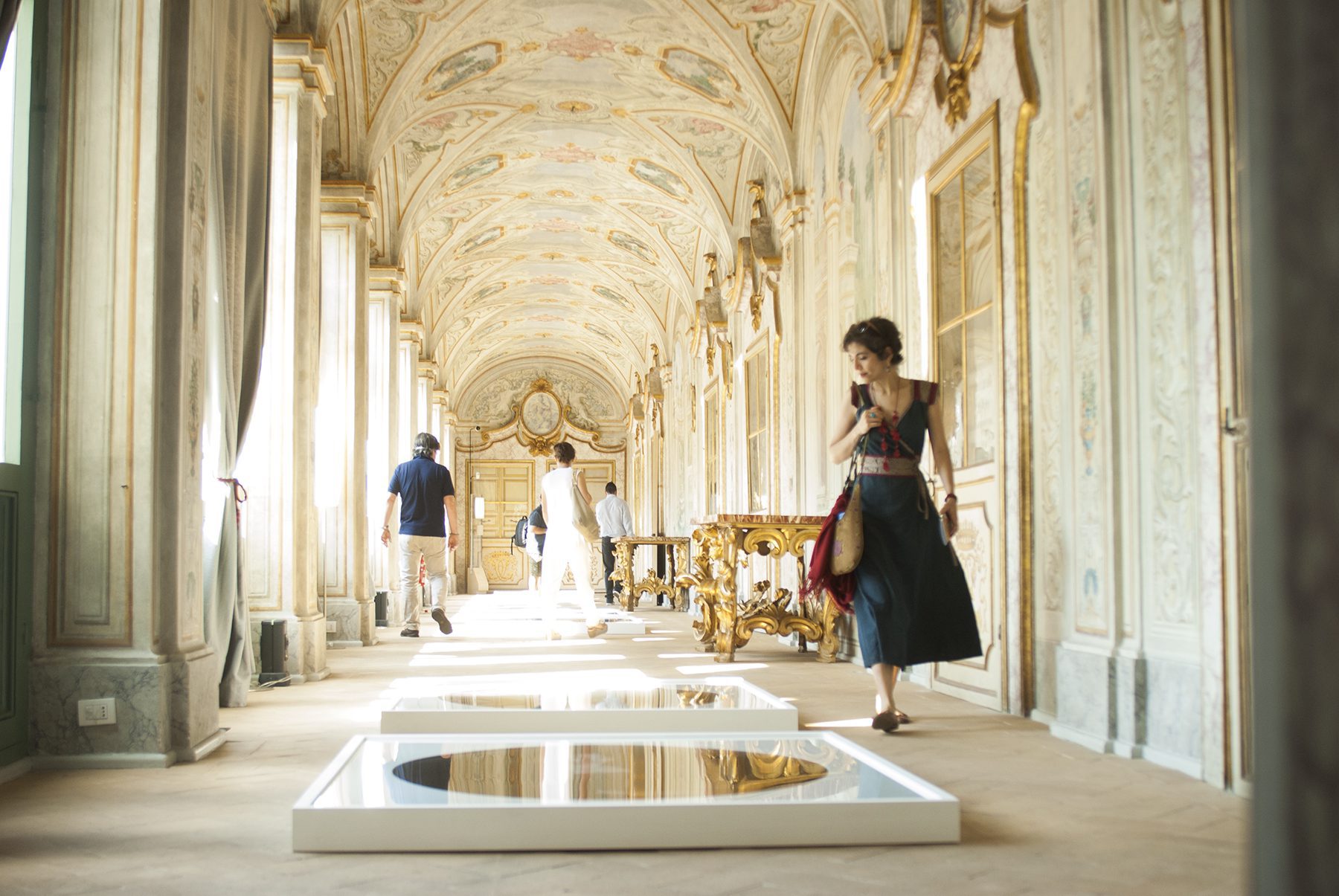Palazzo Collicola in Spoleto hosts valuable artistic collections and is home to high quality temporary exhibitions, in the splendid setting of one of the most beautiful noble buildings in the city.
The place is a receptacle for visual arts, innovation and experimentation. It moves between that fluid heritage that characterizes and stimulates contemporary art from the second half of the twentieth century onwards, with great attention to its more recent forms.
In addition to the works that are part of the permanent collection of the building, such as those of Alexander Calder, Sol LeWitt, the experiment of Sculptures in the City etc … the other rooms are free and mutant spaces that are recreated from time to time by the artists hosted and invited to express themselves, both in forms and in themes.
Palazzo Collicoli is divided into 4 distinct areas: we have already mentioned the first two, the Carandente Museum with the permanent collection and the Exhibition Floor for temporary installations, in addition to the Noble Floor and the Carandente Library. Let’s see them in more detail.
Carandente Museum, contemporary art among the museums of Spoleto
The ground floor of the building houses the Carandente Museum, dedicated since 2010 to the memory of Giovanni Carandente, who over the years has worked with commitment and passion to build valuable artistic events in Spoleto, with Italian and foreign masters, and to document artistic events locals.
The Museum is the heart of the building and is divided into 15 rooms in which paintings and sculptures made by the most important artists of the twentieth century are collected, so much so as to undoubtedly constitute one of the most important collections dedicated to contemporary art in Italy.
Among the works that can be admired in the museum, we mention for example:
Sculpture by Alexander Calder that portrays Giovanni Carandente himself, a tribute to plastic poetry
Various sculptures by the artist Leoncillo Leonardi and his partner Marisa Busanel
Signs, Imprints, Matrices, Nuclei and Signals Collection suspended halfway between the attitude of the fifties and the pop signals of the sixties
Beverly Pepper sculptures
Opera La Mistica della Forma by Alberto Di Fabio, a journey through the allegories of the plastic nature of materials
The Artifici and Nature and Cathartic Symbols collections
The works of Sol LeWitt, an American minimalist who is one of the most important names in the museum
Furthermore, works by Giovanni Albanese, Gianfranco Chiavacci, Shay Frish, Remo Remotti have recently been acquired.
Discover art in Spoleto: other spaces and exhibition areas of Palazzo Collicola
The Noble Apartment
Going up to the first floor, you enter another dimension. Palazzo Collicola is in fact an 18th century noble residence which still maintains its original splendor, especially in this part of the building.
Here, in fact, the Noble Apartment has been rearranged and refurbished as it appeared in the past, with precious original furniture and a collection of paintings ranging from the 16th to the 19th century. In particular, the coffered ceilings and the Roman-inspired friezes are perfectly preserved.
The apartment also lends itself to hosting temporary exhibitions of particular importance, creating a particular synthesis between ancient and contemporary.
The Collicola Gallery is very beautiful: it extends for 32 meters, has large windows and decorations in the Baroque or Proto-Rococo style, between compositional skill and illusionistic virtuosity.
Inside the noble apartment there is also the Carandente Library, where the heritage of texts and documents donated by Carandente to Spoleto is kept. There are thousands of books and magazines of modern and contemporary art, for a collection of inestimable value.
Finally, we recall the museum’s Bookshop, where all the most recent production of editorial volumes can be found.
The Exhibition Plan for the temporary collections
This is the area dedicated to temporary installations that follow one another every year, making the visit always lively and dynamic.
In addition to the internal rooms, the artistic projects of Palazzo Collicola invest the space at 360 degrees and in recent years Collicola On The Wall and Oasi Collicola have developed, the latter transforming the courtyard of the building into a real urban park of sculptures.


Comment (0)